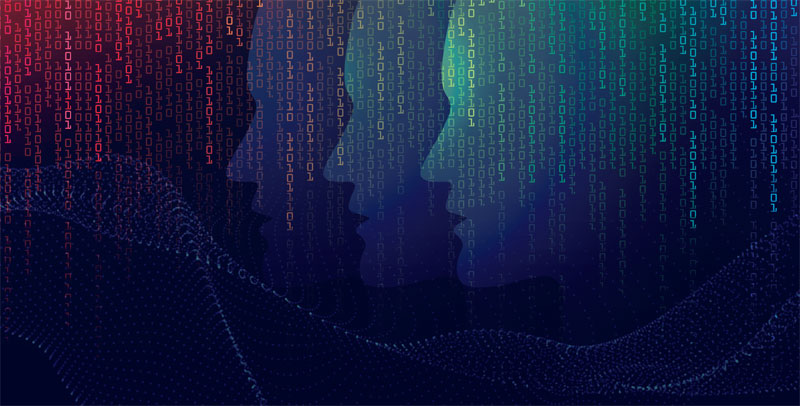How to secure our democracy from deepfake lies
Antara Jha
In today’s hyper-connected digital age, the lines between reality and fiction have become increasingly blurred. With the advent of sophisticated artificial intelligence (AI) and deepfake technology, the ability to manipulate and fabricate multimedia content has reached unprecedented levels. This sinister convergence of cutting-edge AI and cyber capabilities poses a grave threat to the integrity of our democratic processes, as malicious actors leverage these tools to spread disinformation and sow chaos.

The term deepfake refers to the manipulation of audio, video or image content using advanced AI techniques, such as deep learning and generative adversarial networks (GANs). These algorithms can create highly realistic synthetic media that is virtually indistinguishable from the genuine article. The implications of this technology are far-reaching and deeply concerning, as it can be weaponized to undermine public trust, influence elections and erode the very foundations of our democratic societies.
The Dark Web
Beneath the surface of the internet lies a shadowy realm known as the dark web, a decentralized network of anonymous online activities that can be accessed only through specialized software and encryption protocols. This clandestine digital landscape has become a breeding ground for nefarious activities, including the proliferation of deepfake content.
Within the dark web's encrypted channels, malicious actors can buy, sell and trade deepfake tools, software and services with relative impunity. These underground marketplaces facilitate the dissemination of deepfake technology to a broader audience, empowering individuals and organizations with malicious intent to create and distribute fabricated content on an unprecedented scale.
The Cyber Nexus: The convergence of deepfake technology and cyber capabilities has ushered in a new era of hybrid threats that transcend traditional boundaries. Malicious actors can leverage cyber vulnerabilities and exploit weaknesses in digital infrastructure to amplify the reach and impact of deepfake content. This potent combination has the potential to undermine the integrity of critical systems and infrastructure, such as elections, financial markets and national security apparatuses.
One particularly concerning scenario is the potential for cyber actors to infiltrate and manipulate the digital infrastructure of electoral processes. By injecting deepfake content into these systems, they could sow confusion, undermine public trust, and potentially influence the outcome of elections. This threat is compounded by the rapidly evolving nature of deepfake technology, which outpaces the ability of traditional cybersecurity measures to detect and mitigate these sophisticated attacks.
Global Response: Recognising the grave threat posed by deepfake technology, various countries around the world have implemented a range of legal and technical countermeasures to safeguard their democratic processes. However, the global response has been fragmented and uneven, with varying degrees of success.
The United States has taken a multi-pronged approach rooted in its constitutional principles of free speech. While the First Amendment to the US Constitution (1791) protects certain forms of deepfake content as free expression, several states have enacted laws criminalizing the malicious creation and distribution of deepfakes with the intent to deceive or cause harm, striking a balance between free speech and public interest.
In Europe, the proposed Artificial Intelligence Act (2021) is a comprehensive regulatory framework aimed at mitigating risks associated with AI technologies, including deepfakes, while respecting fundamental rights outlined in the European Convention on Human Rights and the Charter of Fundamental Rights of the European Union (EU).
Russia’s aggressive stance on weaponizing deepfakes, while concerning, operates within the legal framework of its Constitution of the Russian Federation (1993) and legislation, which grant the government broad powers to control information flows and suppress dissent in the name of national security.
Australia has taken a proactive approach, with the establishment of the Australian Electoral Commission’s (AEC) Counter Disinformation Task Force. This dedicated unit is tasked with monitoring and mitigating the spread of disinformation, including deepfake content, during electoral processes. The AEC's approach reflects the nation's commitment to upholding democratic principles enshrined in its Australian Constitution (1901). The Counter Disinformation Task Force operates within the bounds of Australian law, collaborating with social media firms and fact-checkers to combat disinformation during elections.
France, a nation with a rich history of democratic values, implemented the ‘Fake News Law’ (Loi relative à la lutte contre la manipulation de l’information) in 2018. This comprehensive legal framework addresses the threat of deepfakes by allowing judges to order the removal of false or misleading content, including deepfakes, during electoral periods. Additionally, the law imposes hefty fines and potential prison sentences for individuals found guilty of disseminating such content maliciously. It strikes a balance between protecting democratic processes and respecting the freedom of expression guaranteed by the French Constitution and the European Convention on Human Rights.
Learning from Global Experiences
India, the world’s largest democracy, can draw valuable lessons from the experiences of other nations in combating deepfake threats. By studying the successes and failures of various countermeasures implemented globally, India can develop a robust and comprehensive strategy tailored to its unique challenges and context.
One key lesson is the importance of fostering collaboration and information sharing between government agencies, tech companies, civil society organisations and international partners. The dynamic and transnational nature of deepfake threats necessitates a coordinated and collective response that transcends borders and jurisdictions.
Another critical lesson is the need for a robust legal framework that strikes a delicate balance between safeguarding democratic processes and protecting fundamental rights and civil liberties. India can learn from the experiences of nations like France and the EU in crafting legislation that addresses deepfake threats while upholding principles of free speech and privacy.
Furthermore, India can prioritise investment in research and development of advanced detection and authentication technologies. By supporting cutting-edge initiatives in areas such as digital watermarking, blockchain-based authentication and AI-powered content analysis, India can stay ahead of the curve and enhance its ability to identify and mitigate deepfake content.
You must be logged in to view this content.

